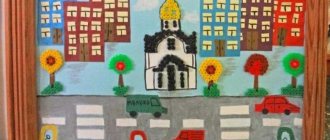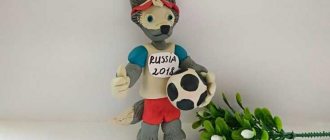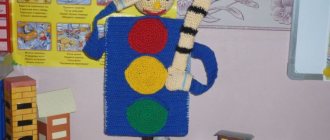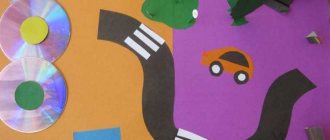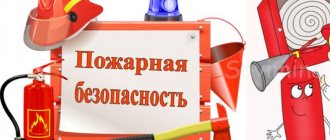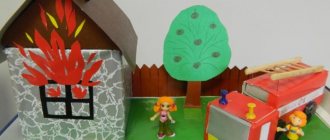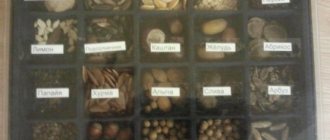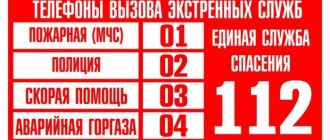Paper applique for Russia Day
On the twelfth of June, citizens of our country will celebrate the day of one of the most powerful powers in the world. This day has recently become considered a Russian holiday. In preparation for festive events, together with your children, you can make a bright applique with your own hands - a postcard. Such work will help to study or remember state symbols. One of the main symbols is the tricolor flag.
The craft can also be decorated with a white dove - a messenger of goodness and peace. We present to you a master class suitable for the theme of the holiday.
To create an application, prepare:
- Thick cardboard of any color;
- Scissors;
- Crepe paper in red, blue and white colors;
- Plain blue and white paper;
- Glue.
Stages of making a three-dimensional postcard for Russia Day:
Thick cardboard will become the basis of the postcard application. You can take any color; the surface of the cardboard will in any case be hidden under the spools of corrugated paper. The soft paper itself will be needed to imitate the Russian flag. We have selected the appropriate shades. Additionally, we will decorate the craft with a paper dove and flowers to match the flag.
Cut out a rectangle from cardboard. Cut rolls of soft corrugated paper into small squares. You will need three separate portions of red, blue and white paper.
Roll many balls of soft paper to cover the surface of the cardboard. This technique is called clumping because the process involves creating many small lumps.
Generously coat the surface of the cardboard with thick glue and begin pressing the prepared lumps on top, collecting them by color. You need to form three stripes of red, blue and white. You can pre-apply pencil borders for more accurate work. Attach the balls tightly, pressing each subsequent one to the previous one.
Fill the entire surface of the canvas with balls. Now the famous banner is ready. The surface of the applique is rough, the craft looks like a three-dimensional postcard.
To add some extra festive elements, also make some paper flowers to match the overall composition. Cut the paper into squares. Fold each square several times and trim the top edge with a birdie. You will get a blank for a flower.
Glue white and blue flowers from two layers of paper. Glue the red center - a simple spool of corrugated paper - into the center.
Glue flowers at the bottom of the applique.
Cut out a dove figurine from white paper. Glue to the center of the applique.
The craft for Russia Day is ready. This could be an exhibit for a children's exhibition or a fragment of a wall newspaper.
If there is a need to make a product on the specified topic, then the most advantageous option is to model the main state symbols.
Flag layout
The craft can be designed as a layout for the Russian Flag Day. A group of children, for example, in a kindergarten, can be involved in making flag crafts.
For the layout you will need children's palms cut out of colored paper. Each child will feel their importance in life by looking at the end result.
To work you will need to prepare the following material:
- 2 types of corrugated cardboard. One is A4 sheet size. The second one has side parameters of 6x12 cm. There should be two such sheets.
- Paper in three colors: white, blue, red. Paper size A4.
- Paint brush, red gouache.
- PVA glue.
- Pencil.
The base for the flag is made of corrugated cardboard. A rectangular shape with sides 25x35 cm is cut out. To attach the base, you need to make slits 3 cm deep.
From the corners below it is 5 cm apart towards the center. A photo of step-by-step instructions for making a Russian flag model will help you clearly understand the work process.
- Crafts for Mother's Day - how to make simple and beautiful original decorations and toys with your own hands (130 photos + video)
- Eyes for crafts: how to make templates and a master class on making eyes from various materials (100 photos)
- Craft angel - 105 photo ideas on how to make your own angel quickly and easily from scrap materials
Next you need to prepare stands for the flag. Prepared rectangles with sides 6x12 cm are cut so that one of the corners becomes semicircular. The slots for fastening are made identical to the slots in the base.
Two important elements are connected: the stand with the base. The part of the stand that is visible in front of the base is covered with red color on the front side.
Palms are cut out, 8 pieces of each color. Palms are glued to the base from top to bottom in rows. First the white palms are glued on. The parts are placed overlapping.
It is necessary to place your palms so that the base is not visible between them. It is recommended to apply the adhesive base to the wrist area. Your fingers should be free of glue.
The craft will be ready when three stripes imitating a flag are glued.
Both works can be exhibited at an exhibition of children's crafts dedicated to Russia Day and Flag Day. Some ideas in the design of two crafts can be used in a wall newspaper.
- Crafts from matches - 125 photos of original ideas for professionals and simple crafts for beginners
- Crafts with children: a review of interesting and exciting ideas for creating toys and decorations (115 photos)
- Crafts from tights: 60 photos of basic ideas and sewing original crafts with your own hands
Symbol of Russia Country of Masters
A rider on a horse is embroidery on satin with a straight stitch, it took 2 hours, I had to constantly turn the hand wheel on an electric sewing machine (very small work). Then the embroidery on the reverse side was smeared with glue; when it had dried, it was cut out and glued onto red satin. Rhinestones are glued along the edge.
We found two plastic bottles. The bottom one is made of sunflower oil, the top one is made of water. We cut them as needed and glued the necks together with hot glue. Two pieces of wire were wrapped in padding polyester and inserted into a cut bottle. The plastic from the bottles itself was wrapped with adhesive tape to make the fabric stick better. We made legs out of wire, wrapped them in yarn so that the yarn wouldn’t fly off, and smeared the wrapped surface with a little glue.
Kanzashki have been prepared. Anyone who does it knows how to do it; there is a manual for making various kanzashkas on the Internet. They started gluing it from the tail, then the legs, and brought it to the place of the wings. We got busy with the wings.
Wings. We found something from the packaging. We cut out the shape of the wings, covered them with kanzashki and glued them to the body of the eagle.
Of course, to do something you always need an idea or a picture, which is what we had before our eyes.
My student is a beauty. For this work she took 2nd place in the All-Russian competition “Knowledge of State Symbols”
Thank you all for stopping by, I hope this is useful to someone.
My homeland is Belarus
cornflower
Prokopovich Ekaterina Alekseevna preschool teacher State educational institution “Nursery-garden No. 59, Brest”
The teacher’s material participates in the International Festival of Patriotic and Spiritual-Moral Directions “Native Side”, competition “My Small Motherland”
Integrated areas: speech development, culture of verbal communication and fine arts (application).
Target:
- form a child’s active vocabulary based on ideas about life around him, develop the ability to answer questions, requests from an adult, participate in a general conversation,
- develop the ability to understand the meaning of general words (homeland, country, city), develop the ability to coordinate adjectives with nouns in gender and number, develop the articulatory and vocal apparatus, auditory perception, develop the ability to take part in conversations with adults and peers about the phenomena of the surrounding world,
- deepen knowledge about the peculiarities of the nature of Belarus, provide information about rivers and lakes, cultivate love for the motherland, for the symbols of the Republic of Belarus,
- develop an emotionally positive attitude towards the application process,
- develop the ability to use gluing techniques (carefully apply glue to stems and leaves, flowers),
- develop fine motor skills of the fingers,
- cultivate a sustainable interest in the application.
Equipment: recording of the song “Where does the Motherland begin?”, pictures and illustrations on the topic “My Motherland”, map of Belarus, pictures with symbols of Belarus (bison, cornflower, stork), posters “My Belarus”, “Our Motherland”, corrugated paper blue, blue and green colors, wooden sticks, scissors, adhesive tape.
Preliminary work: reading poems by Belarusian poets about Belarus, its nature, looking at illustrations of books, an atlas of the Republic of Belarus, paintings about the nature of Belarus, postcards with symbols of the Belarusian region, the coat of arms and flag of the country, listening to musical works of Belarusian composers, conversations “On the page of the Red Book” , “Our Belarus”.
“Circle time” Educator: -Girls and boys, let’s stand in a circle and greet each other! Invented by someone Simple and wise When meeting, say hello: - Good morning! - Good morning! Good morning to the sun and birds! Smiling faces. And everyone becomes Kind, trusting... Let good morning Last until the evening!
Advertising message
Educator: -Now let’s have the girls sit down first. Girls, sit down! Now the boys are sitting down! Well done! And let's fill out our social calendar (the children, together with the teacher, name the date, day of the week, number of children, boys and girls, as well as weather conditions).
Educator: -Guys, now repeat after me loudly and expressively! Ek-ek-ek-ek and the handsome cornflower - Ok-ok-ok-ok Proud wildflower! Oh-oh-oh-oh With a blue carved crown, Na-na-na-na Like a king, but there is no throne there! (N.Maidanik)
Educator: -And now everyone has stood up! And we'll play a little! Physical education I look at the map: (Stretch straight palms forward, look) Here is the Belarusian land. There are meadows and fields, rivers, forests and lakes! (Bend fingers starting with thumb) I love you, Belarus! (They clasp their palms tightly) You are my Motherland! (Place hands to chest)
Educator: - And we, guys, are starting our lesson with you. Prepare your ears and eyes.
Progress of the lesson An excerpt from the song “Where does the Motherland Begin?”
Educator: -Guys, I’m now going to read you a wonderful poem, and you listen to it carefully: Motherland is a big, big word! Let there be no miracles in the world, If you say this word with your soul, It is deeper than the seas, higher than the skies! It fits exactly half the world: Mom and Dad, neighbors, friends. Dear city, home apartment, Grandmother, school, kitten... and me. A sunny bunny in your palm, a lilac bush outside the window, and a mole on your cheek - This is also the Motherland! (Tatiana Bokova)
- Guys, what is this poem about? (children offer options)
-What unusual word did you hear that was repeated several times? That's right, this is the word homeland! Let's all say this word loudly: "Ro-di-na." What do you think the word homeland means? What is homeland? (children answer questions)
Educator:
- That’s right, guys, the homeland is the native land, home, flowers, mother... The homeland unites all people living in the same country, they speak the same language, celebrate common holidays.
Conversation about the Republic of Belarus Educator: -What republic do we live in? -What do people who live in Belarus call? -What city of Belarus do we live in?
Game “Decorate the Word” The task is to practice selecting adjectives for a noun, agreeing nouns with adjectives in gender and number.
Educator: -Boys, girls, let us tell you what our Belarus is like? What is Belarus like? Beautiful, big, green, powerful, kind, independent, generous, beloved, blue-eyed, dear, prosperous. -What are Belarusians like? Hardworking, caring, friendly, patient, smart. -What city is Brest? Beautiful, green, clean, crowded, noisy.
Game “I am Belarus, you are a part of me” The task is to consolidate the idea of the nature and surrounding world of Belarus.
Educator: -I am Belarus, you are a part of me. Who are you? Children: -I am a city, I am a village, I am a forest, I am a river, I am monuments, I am….
Physical education minute
Educator: The task is to ensure a change in types of activities and an optimal motor mode, to cultivate a friendly attitude towards others. -Guys, now let's rest a little. Physical school Hello, golden sun! (children raise their hands up) Hello, the sky is blue! (spread their arms to the sides) Hello, free breeze! (swing their arms from side to side) Hello, little oak tree! (crouch) We live in the same region - (clap their hands) I greet you all! (hands on the belt, turns left and right) Forests, rivers and fields are my Motherland! (spread arms to the sides)
Educator: -How smart you are! Now let's all go to our map of Belarus! Look how big it is! How big our Belarus is! There are 6 regions in our country. The most important region is Minsk. And there are also Brest, Vitebsk, Grodno, Gomel and Mogilev. Guys, our country has special symbols that are not found in other countries! Or very little! Let's now glue our symbols onto the map! I'll show you a picture and you tell me what it is. (the teacher shows a picture of lakes and rivers, a stork, a bison, a cornflower, etc. and one by one attaches the symbol to the map of Belarus). Children: name the symbols of Belarus.
Educator: -What a great fellow you are! All the symbols of our Belarus have been named! Guys, Belarus has long been famous for its forests, nature, birds, animals, but also products made from straw, flax, and clay. Look at the handbrake, napkins, straw dolls. And today we will also go to the workshop! And today we will make a real symbol of Belarus - this cornflower! But in order for us to feel like real Belarusians, we’ll put these wonderful headbands with a Belarusian pattern on our heads! (children wear headbands with Belarusian ornaments)
Educator:
-And now we begin our application. Look at what you have on the table prepared for work: a wooden stick for our stem, scissors, corrugated paper in blue, light blue and green. Let's get to work! 1) We create the inner thin leaves from blue paper. Cut the ribbon 4 by 20 cm. 2) Make cuts along the edge and form a fringe. 3) Wrap it around a stick and glue it. 4) Cut out 6 blue squares measuring 5 by 5 cm.
Educator: - Guys, now we’ll have a little rest. Get up and repeat after me! Physical school Teacher: When the rye starts to sprout, (Children raise their hands and sway from side to side) You can easily find me. (Children imitate looking through binoculars) I am a modest wildflower, (Children crouch) They gave me the name cornflower! (Children jump out and raise their hands up)
Educator: We rested a little and let's continue our work. 5) Cut out the “teeth”. 6) Form the petals. 7) And glue 6 petals to the stick. Then we take green corrugated paper and cut out a thin strip. We wrap a green ribbon of corrugated paper around a wooden stick. 9) Now we make leaves. Cut three strips of corrugated paper and form petals. 10) Glue the resulting petals to our stem.
5) Cut out the “teeth”. 6) Form the petals. 7) And glue 6 petals to the stick. Then we take green corrugated paper and cut out a thin strip. We wrap a green ribbon of corrugated paper around a wooden stick. 9) Now we make leaves. Cut three strips of corrugated paper and form petals. 10) Glue the resulting petals to our stem.
Lesson summary
Educator:
- Guys, what a great job you are today! Look what wonderful cornflowers we made today!
Educator:
Homeland begins on the threshold of your home. She is huge and beautiful. And everyone has one, like a mother. One must be proud of one’s homeland, love it deeply and tenderly, and take care of it.
List of used literature: 1. Preschool education curriculum. Minsk, 2022 2. Symbols of Belarus: a guide for teachers / V.S. Krasyuk. – Minsk: Ecoperspective, 2022. – 111 p.
cornflower
Pupil's work
Gumen Dmitry Egorovich, 5 years old, middle “G” group State Educational Institution “Nursery-Garden No. 59 of Brest”, Belarus “Arts and Crafts Competition “Patterns of the Native Side”” “Cornflowers”, Application Prokopovich Ekaterina Alekseevna, preschool teacher
